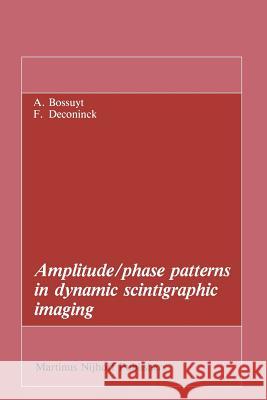Amplitude/Phase Patterns in Dynamic Scintigraphic Imaging » książka
Amplitude/Phase Patterns in Dynamic Scintigraphic Imaging
ISBN-13: 9789400960114 / Angielski / Miękka / 2011 / 168 str.
Conventional nuelear medieine proeedures study the dis- tribution of radiolabelled eompounds (radiopharmaeeutieals) in the body under physiologieal as well as under pathologieal eonditions. Beeause of their ability to visua- lise and to quantify the distribution of radiopharmaeeuti- eals within the body by means of external deteetors, nuelear medieine teehniques are basieally non invasive and funetion oriented. The spatial variation of the traeer distribution in the field of view, or the ehange in distribution during a time interval are interpreted as representing speeifie phy- siologie or pathophysiologie processes. As eompared to other diagnostie imaging teehniques, the spatial resolution of seintigraphie images is rather poor, their temporal resolu- tion is good. Faetors that will therefore determine the ultimate diag- nostie value of a seintigraphie study inelude 1. The speeifieity of the labelled eompounds for the process under study, 2. The resolution in time and space of the instrumentation, and its ability of measuring quantitatively tissue aetivity eoneentrations, 3. The formulation of physiologieal or pathophysiologieal models from whieh the distribution of the traeer ean be predieted. 2 While interpreting nuclear medicine data, the interrelations between these factors should permanently remain under consi- deration. The generalised use of minicomputers has resulted in major advances in information processing in nuclear medicine imaging procedures. Central to this is image digitisation.











